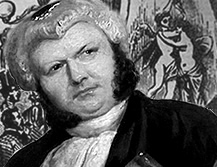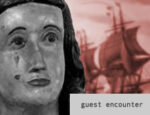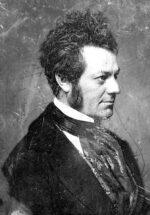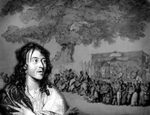Description
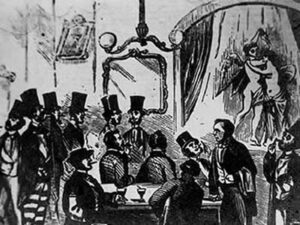 Meet the lovers Cupid and Psyche as acted by half-naked young women in a series of semi-pornographic poses plastiques at the Coal Hole Tavern on the Strand in 1854. The performance was organized by the Victorian impresario Renton Nicholson (1809-1861). Contemporary critics regarded Renton’s shows as morally reprehensible, and were displeased that women were allowed to join the audience.
Meet the lovers Cupid and Psyche as acted by half-naked young women in a series of semi-pornographic poses plastiques at the Coal Hole Tavern on the Strand in 1854. The performance was organized by the Victorian impresario Renton Nicholson (1809-1861). Contemporary critics regarded Renton’s shows as morally reprehensible, and were displeased that women were allowed to join the audience.
Born on the Hackney Road, apprenticed at twelve years old to a pawnbroker, erstwhile prisoner, gambler, tobacconist, publican, wine merchant and popular journalist, Nicholson discovered his métier as the producer of entertainments in which an insouciant attitude to ancient Greece and Rome figured large. In 1841 he established the ‘Judge and Jury Society’ at a Covent Garden tavern. As ‘Lord Chief Baron’ he presided, in judge’s regalia, over subversive mock trials based on celebrated cases of the day. Having made several court appearances for debt himself, Nicholson was just familiar enough with judicial Latin to parody it effectively.
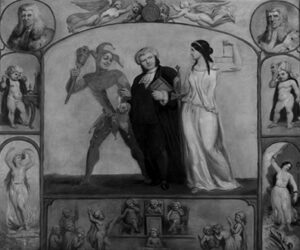 The trials had a class-political angle: Nicholson liked cases involving the private lives of aristocrats, bestowing upon them new titles such as ‘The Hon. Viscount Limpus versus the Hon. Priapus Pulverton’. The female parts were acted by male transvestites, and Nicholson, who always acted the judge, entertained his cross-class audience by extemporising in streams of amateur Latin, especially when summarising what an observer denounced as the ‘filthy particulars’ of the cases. He also held mock parliamentary debates and elections; he supported Universal Suffrage.
The trials had a class-political angle: Nicholson liked cases involving the private lives of aristocrats, bestowing upon them new titles such as ‘The Hon. Viscount Limpus versus the Hon. Priapus Pulverton’. The female parts were acted by male transvestites, and Nicholson, who always acted the judge, entertained his cross-class audience by extemporising in streams of amateur Latin, especially when summarising what an observer denounced as the ‘filthy particulars’ of the cases. He also held mock parliamentary debates and elections; he supported Universal Suffrage.
In other taverns, including the Coal Hole on the Strand, where academics and students from King’s College still drink regularly, he supplemented the mock trials with poses plastiques and tableaux vivants and accompanied them with hilarious mock-learned ‘lectures’. In this allegorical painting by Archibald S. Henning, the poses of Venus Arising from the Waves and Andromeda Tied to her Rock are illustrated in the bottom left and right-hand corners respectively. Other ancient figures shown at his public houses included Sappho, and Diana Preparing for the Chase.
Despite constant financial problems, he was reputed to be extremely generous to the poor and destitute. In 1860 he published his autobiography, Rogue’s Progress. He is buried in Brompton cemetery.

